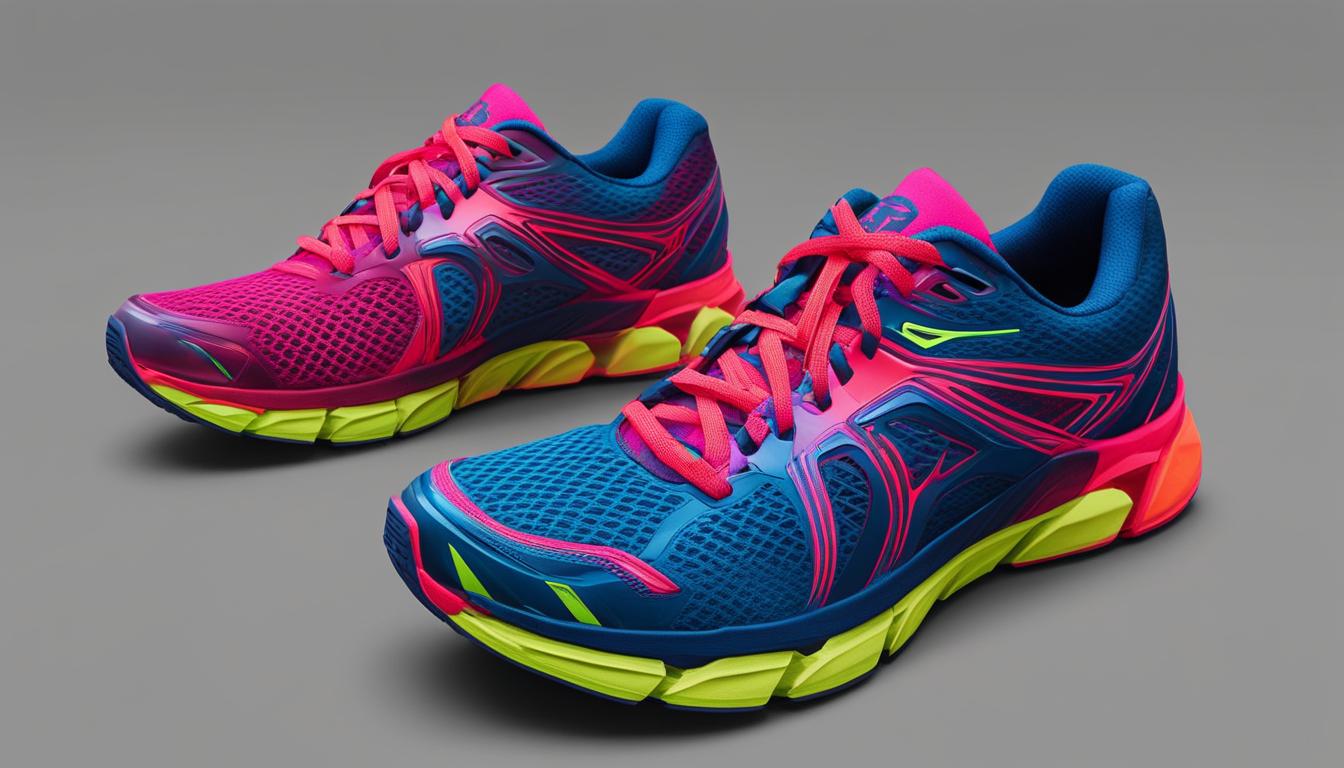Running is a great way to improve your fitness and overall health. Whether you’re a complete beginner or have been inactive for a while, it’s important to start slowly and gradually increase your running routine. Following a sensible training plan and wearing proper running shoes are essential for avoiding injuries and making progress. Here are some tips and guidelines to help beginners get started on their running journey.
- Start slowly and gradually increase your running routine.
- Follow a sensible training plan and wear proper running shoes.
- Set clear goals and track your progress to stay motivated.
- Consider starting with walking to build endurance.
- Transition to running using the run-walk method.
Setting Your Goals and Staying Motivated
Setting clear goals and staying motivated are key aspects of a successful running journey. When you start running, it’s important to have a specific goal in mind. This could be anything from running a certain distance or participating in a race. Having a goal gives you something to work towards and keeps you focused on your progress.
To stay motivated, consider creating a running routine that fits your schedule. Set aside specific times for your runs and make them a priority. By incorporating running into your daily or weekly routine, it becomes easier to stay consistent and make progress.
Tracking your progress is another great way to stay motivated. Use a running app or keep a journal to record your runs and monitor your improvement. Seeing your progress on paper or in an app can be incredibly motivating and help you stay on track.
“Setting goals is the first step in turning the invisible into the visible.” – Tony Robbins
Remember, setting realistic goals is important. Start with smaller goals and gradually work your way up. Celebrate each milestone you achieve along the way, whether it’s running a little longer or reaching a faster pace. Your journey as a runner is unique, so set goals that are challenging yet attainable for you.
Setting Running Goals
- Choose a specific distance or time goal
- Set a timeline for achieving your goal
- Break your goal down into smaller milestones
- Celebrate and reward yourself for reaching each milestone
Staying Motivated
- Create a running routine that fits your schedule
- Find a running buddy or join a running group for added motivation
- Use a running app or keep a journal to track your progress
- Treat yourself to new running gear or other rewards as a motivation
By setting goals and staying motivated, you’ll be on your way to becoming a successful and committed runner. Remember, running is not just about physical strength, but also mental resilience. Stay focused, stay motivated, and enjoy the journey.

Starting with Walking
If you’re new to running or have been inactive for a while, it’s a good idea to start with walking. Walking is a low-impact exercise that helps build endurance and prepare your body for running. It allows your muscles, tendons, and fitness level to adapt to the demands of running gradually. This is especially important for beginners to avoid injuries and ensure a smooth transition into a running routine.
To get started, you can follow a walking plan that gradually increases the duration and intensity of your walks. This will help you build up your stamina and improve your cardiovascular fitness. Start with shorter walks and gradually increase your time and distance as your body adjusts. Remember to listen to your body and take rest days when needed to prevent overexertion.
By incorporating walking into your fitness routine, you’ll be able to lay a solid foundation for your running journey. Walking not only helps improve your cardiovascular health but also strengthens the muscles and tendons in your legs, making them better equipped for the impact of running. It’s a great way to ease into physical activity and start building up your endurance and fitness level.
Transitioning to Running
Once you’ve built up your walking endurance and feel comfortable with regular walks, it’s time to start incorporating running into your routine. The transition from walking to running can be done gradually using a method called the run-walk method. This approach alternates between running and walking intervals, allowing your body to adjust to the demands of running while minimizing the risk of injury.
To start with the run-walk method, begin by running for a short period, such as two minutes, followed by a walking interval of one minute. Repeat this pattern for the duration of your workout. As your stamina improves, gradually increase the duration of your running intervals and decrease the duration of your walking intervals. This gradual progression helps build both cardiovascular and muscular endurance.
It’s important to follow a beginner running plan that outlines specific run-walk ratios and provides guidance on how to gradually increase your running intervals. These plans take into account your current fitness level and help you progress safely. Remember, the key is to listen to your body and not push yourself too hard. Take rest days as needed and give your muscles time to recover and adapt to the demands of running.
Example Beginner Running Plan
- Week 1: Run 2 minutes, walk 1 minute (repeat for 20 minutes)
- Week 2: Run 3 minutes, walk 1 minute (repeat for 25 minutes)
- Week 3: Run 4 minutes, walk 1 minute (repeat for 30 minutes)
- Week 4: Run 5 minutes, walk 1 minute (repeat for 35 minutes)

Remember, everyone progresses at their own pace, so feel free to adjust the intervals and duration based on your individual fitness level and comfort. The goal is to gradually increase your running intervals until you can comfortably run without having to take walking breaks. This method allows your body to adapt and reduces the risk of overuse injuries.
Running Non-Stop

If you’ve been following a beginner running plan and gradually building your endurance, you may be ready to take the next step and start running non-stop. This is a great milestone to achieve and can give you a sense of accomplishment in your running journey. Here are some tips to help you transition from run-walk intervals to running continuously.
Stay Consistent
Consistency is key when it comes to running non-stop. Make sure you stick to your training plan and don’t skip any runs. Consistently running will help improve your cardiovascular fitness and build the necessary endurance to run without taking walk breaks.
Gradually Increase Running Duration
To transition to running non-stop, gradually increase the duration of your running intervals while decreasing the time you spend walking. For example, you can start by running for 5 minutes and walking for 1 minute, and then gradually increase the running duration to 7 minutes, 10 minutes, and so on. Listen to your body and go at a pace that feels comfortable for you.
Remember that running is a long-term journey, and it’s important to be patient with yourself. It may take time to build the endurance to run non-stop, but with consistent training and perseverance, you’ll get there.
Focus on Breathing and Form
When running non-stop, pay attention to your breathing and form. Take deep breaths in through your nose and exhale through your mouth to help oxygenate your muscles. Additionally, focus on maintaining good running form by keeping your posture upright, arms relaxed, and landing with a midfoot strike.
By following a beginner running plan, staying consistent, and gradually increasing your running duration, you’ll be able to run non-stop and reach your goals. Remember to listen to your body, be patient, and enjoy the progress you’re making in your running journey.
Increasing Distance
Once you’ve become comfortable running 5K without stopping, it’s time to challenge yourself and increase your running distance. Whether you have a specific goal in mind, such as running a 10K race, or simply want to push your limits, a training plan designed for increasing distance will help you achieve your objectives. Building endurance is crucial for longer runs, and with the right approach, you’ll be able to conquer new distances.
Here are some tips to help you increase your running distance:
- Gradual progression: Incrementally increase your mileage each week. Start by adding an extra kilometer to one of your weekly runs. As your body adapts to the increased distance, continue to add small increments until you reach your target distance.
- Long runs: Include one long run each week to build endurance. Start with a distance that is challenging but manageable, and gradually increase the length of your long runs over time.
- interval training: Incorporate interval training into your routine to improve your speed and endurance. This involves alternating between periods of fast running and slower recovery periods.
- Consistency: Consistently stick to your training plan and make running a regular part of your routine. Consistency is key to progressing and preventing injuries.
Remember, increasing your running distance takes time and patience. It’s important to listen to your body and give yourself enough time to recover between runs. Don’t be discouraged by any setbacks or slower progress. With dedication and perseverance, you’ll be able to build up your endurance and achieve your distance goals.

Improving Speed
One of the key aspects of becoming a better runner is improving your speed. Whether you’re training for a race or simply want to challenge yourself, incorporating speedwork into your training can help you run faster and more efficiently.
Speedwork involves running at a faster pace for short intervals, followed by recovery periods. This type of training helps improve your cardiovascular fitness and running economy. It also helps you develop the mental toughness required to push through physical discomfort and maintain a faster pace.
When incorporating speedwork into your training, it’s important to start gradually and progress at a pace that feels comfortable for you. A beginner running plan that includes speed intervals can help you gradually increase your speed and endurance. For example, you can start with shorter intervals, such as 200 meters, and gradually increase the distance or the number of repetitions as you become more comfortable.
Remember to always warm up before speedwork sessions and cool down properly afterward. This will help prepare your muscles for the intensity of the workout and reduce the risk of injury. Also, listen to your body and give yourself enough time to recover between speedwork sessions to avoid overtraining.
Tips for Beginner Runners
As a beginner runner, it’s important to keep a few key tips in mind to help you on your running journey. These tips will ensure you stay motivated, prevent injuries, and make the most out of your running experience.
Focus on Your Running Form
Good running form is essential for both efficiency and injury prevention. Focus on landing with a midfoot strike instead of your heel, as this helps absorb impact and reduces stress on your joints. Additionally, keep your posture upright and engage your core muscles to maintain stability and prevent slouching. By prioritizing proper running form, you’ll minimize the risk of injuries and enhance your overall running performance.
Find the Right Running Shoes
Choosing the right pair of running shoes is crucial for comfort and injury prevention. Visit a specialty running store to get properly fitted for running shoes that suit your foot type and running style. The right shoes will provide adequate support, cushioning, and stability, reducing the risk of common running injuries. Don’t forget to replace your shoes every 300-500 miles or when you notice significant wear and tear.
Stay Motivated
Keeping yourself motivated is key to maintaining a consistent running routine. Set realistic goals that can be broken down into smaller milestones. Tracking your progress using a running app or a journal can help you see the improvements you’ve made and keep you motivated to continue. Consider finding a running buddy or joining a running group to stay accountable and make your runs more enjoyable. Remember, running is a personal journey, so celebrate your achievements along the way and don’t compare yourself to others.
Overcoming Challenges
Starting a new running routine can come with its fair share of challenges. However, with the right mindset and strategies, you can overcome these obstacles and continue on your running journey.
One of the key challenges many beginner runners face is staying consistent. It’s important to create a schedule and stick to it, even on days when you may not feel motivated. Consistency is key to progress, and by making running a regular part of your routine, you’ll start to see improvements in your fitness and endurance.
Another challenge that often arises is dealing with muscle soreness. It’s normal to experience some soreness, especially in the beginning. Allow your body enough time to recover between runs and consider incorporating cross-training activities, such as swimming or yoga, to maintain your fitness without putting excessive strain on your muscles.
Remember, setbacks are a natural part of the running journey. Don’t get discouraged if you have a bad run or miss a training session. Instead, stay positive and focus on the progress you’ve made. Running is a long-term commitment, and every step forward, no matter how small, brings you closer to your goals.
Warming Up and Cooling Down
Before each run, it’s crucial to properly warm up your muscles to prevent injuries and optimize your performance. A dynamic warm-up routine is recommended, consisting of exercises that gradually increase your heart rate and activate the muscles you’ll be using during your run. Here are some warm-up exercises to include:
- Leg swings: Stand next to a wall or a support and swing one leg forward and backward, gradually increasing the range of motion. Repeat with the other leg.
- High knees: Jog in place while lifting your knees as high as possible, alternating legs.
- Butt kicks: Jog in place while kicking your heels towards your glutes, alternating legs.
- Lunges: Take a step forward with one leg, lowering your body until both knees are bent at a 90-degree angle. Return to the starting position and repeat with the other leg.
After your run, it’s equally important to cool down and stretch to promote muscle recovery and prevent post-run stiffness. Start by walking briskly for a few minutes, allowing your heart rate to gradually return to normal. Then, perform static stretches targeting the major muscle groups used during your run. Here are some key stretches to include in your cool-down routine:
- Quadriceps stretch: Stand tall and bring one heel towards your glutes, grabbing your foot with the corresponding hand. Hold for 30 seconds and repeat with the other leg.
- Hamstring stretch: Sit on the ground with one leg extended and the other bent with the sole of your foot against your inner thigh. Lean forward from the hips, keeping your back straight, and reach towards your extended foot. Hold for 30 seconds and repeat with the other leg.
- Calf stretch: Stand facing a wall with one foot in front of the other, placing your hands on the wall for support. Keep your back leg straight and press your heel into the ground until you feel a stretch in your calf. Hold for 30 seconds and repeat with the other leg.
By incorporating a proper warm-up and cool-down routine into your running regimen, you’ll reduce the risk of injuries and enhance your overall running experience. Remember to listen to your body and modify the exercises if needed. Happy running!
Conclusion
Running for beginners is an exciting journey that offers numerous benefits for your fitness and overall well-being. By following a gradual approach and setting clear goals for yourself, you can start running safely and make steady progress. Remember to start with walking to build endurance and gradually transition to running using the run-walk method. As you become more comfortable, you can aim to run non-stop and even challenge yourself by increasing your running distance.
Improving your running speed and maintaining good running form are important aspects to focus on as a beginner runner. Finding the right running shoes and staying motivated through realistic goals and progress tracking are essential for your success. It’s normal to face challenges along the way, but by staying consistent, listening to your body, and overcoming setbacks with a positive mindset, you’ll be able to achieve your running goals.
Incorporating warm-up and cool-down routines into your running routine is crucial for preventing injuries and promoting muscle recovery. Remember to warm up your muscles with dynamic stretches before each run and cool down with brisk walking and static stretches afterward. Lace up your shoes, embrace the journey, and enjoy the incredible benefits that running can bring to your life as a beginner.
FAQ
Is running a good way to improve fitness and overall health?
Yes, running is a great way to improve your fitness and overall health.
How should I start my running routine as a beginner?
It’s important to start slowly and gradually increase your running routine.
What should I do to avoid injuries while running?
Following a sensible training plan and wearing proper running shoes are essential for avoiding injuries.
How can I stay motivated during my running journey?
Setting clear goals for yourself and finding ways to track your progress can help you stay motivated.
Should I start with walking before running?
Yes, starting with walking is a good idea to build endurance and prepare your body for running.
What is the run-walk method?
The run-walk method involves alternating between running and walking intervals.
How can I run non-stop without taking walk breaks?
Following a training plan specifically designed for beginners will help you build the endurance necessary to run continuously.
How can I increase my running distance?
Following a training plan for a 10K race is a great way to gradually increase your endurance and push your limits.
How can I improve my running speed?
Incorporating speedwork into your training can help improve your running speed.
What are some important tips for beginner runners?
Focus on maintaining good running form, finding the right running shoes, and staying motivated.
What should I do if I face challenges in my running routine?
Staying consistent with your training and allowing enough time to recover are key to overcoming challenges.
How should I warm up and cool down before and after my runs?
It’s important to warm up your muscles with dynamic stretching exercises before your run, and cool down with brisk walking and static stretches afterward.


